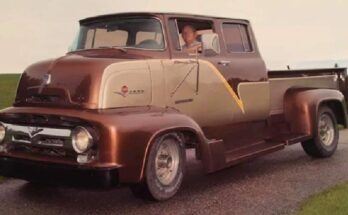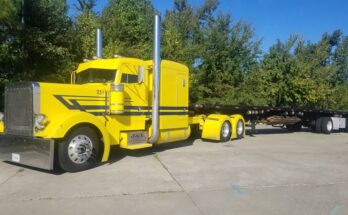As one of only two trucks produced by Honda (the other being the Acty mini-truck), the Honda Ridgeline has a lot of weight to bear, especially as a competitor of other sports utility trucks that have spent more time on the road, such as the Toyota Tacoma, the Nissan Frontier, and GMC’s Colorado and Canyon. Though the Ridgeline is outselling the GMC Canyon (it is outsold by the Toyota Tacoma), the Ridgeline was built not so much as to compete with the other companies’ offerings, but to satisfy almost 20% of Honda owners who would also like a “lifestyle truck” in addition to their other Honda vehicles.
After a two-year hiatus (2014-2016), the redesigned Honda Ridgeline was promoted in 2015 as part of the Specialty Equipment Market Association Show, and in 2016 at the North American Auto Show. Similar to the first generation, it still has all-wheel drive, a dual-action tailgate, and a rear 60/40 split bench seat.
Unlike the first generation Honda Ridgeline, however, the 2017 model does offer front wheel drive and comes with upgrades in safety features, modern electronics, and has been redesigned to look more traditional, with the flat bed being longer, wider, and tougher. It also weighs less (by almost 80 pounds), and has become one of the quietest mid-range trucks on the market due to its improvements in lowering noise, vibration and harshness as well as an acoustic windshield.
While some have noted that the Ridgeline shares plenty of similarities with the Honda Pilot, especially the third generation of the Pilot, the second-generation Ridgeline has improved upon the Pilot by having its chassis strengthened which has improved its torsional rigidity by almost 30%. The engine, a 3.5 I V6, has gained 30hp from its improvements, and the transmission’s abilities have expanded to a wider gear spread and reduced friction.
All these upgrades and improvements do have a downside, however. Due to the redesign and volume of additions, there is less room for passengers, as well as less ground clearance and a shallower bed. The size difference means that there is no longer room to carry a full-size spare tire aboard the Ridgeline.
That aside, if a Honda owner desires a sports utility vehicle to go off-road, haul bikes, or explore nature in a smooth ride with non-US standard equipment such as a beefed up audio system, assist systems, a class III tow hitch, a rearview camera, amplitude reactive dampers, intelligent traction management, as well as more luxurious items such as a push-button start, cruise control, and 18” aluminum alloy rims, then this fits the bill to a tee.
It has also won several awards, including the 2017 North American Car of the Year (truck category), 2017 J.D. Power & Associates’ APEAL award, The 2017 IIHS’ “Top Safety Pick-Plus”, and the first five-star safety rating for a four-door pickup truck from the NHTSA.
The second generation Ridgeline Baja version of the vehicle also has the distinction of winning the SCORE (Southern California Off Road Enthusiast) Stock Mini-Class in 2015 and 2016, matching the first generation’s wins in 2008 and 2010.
 " >
" >


